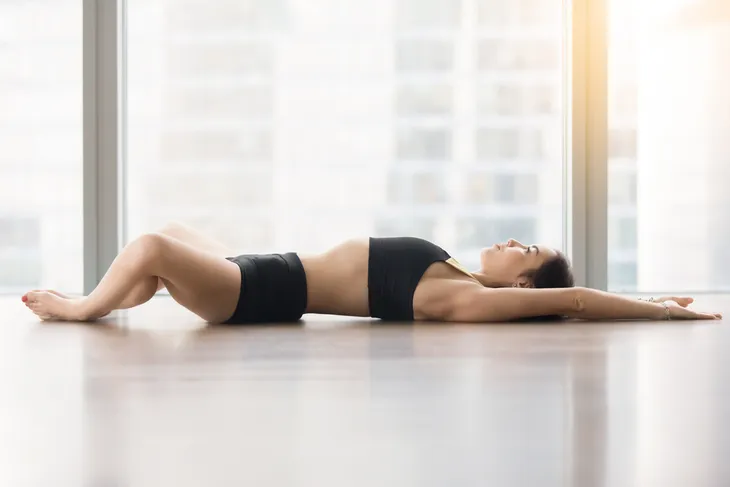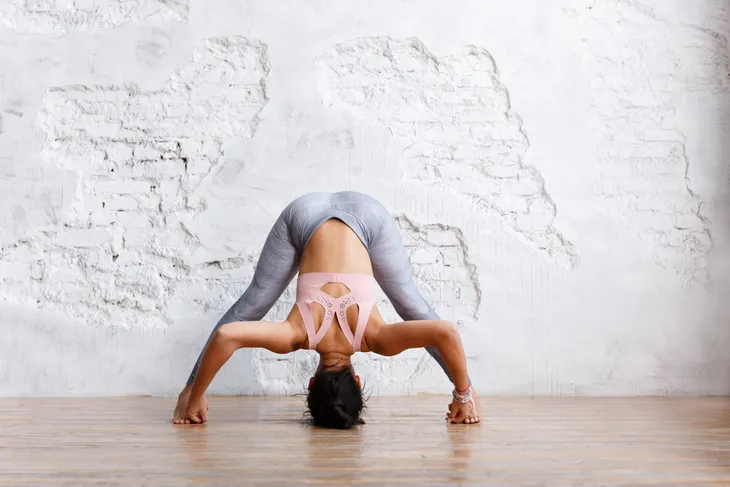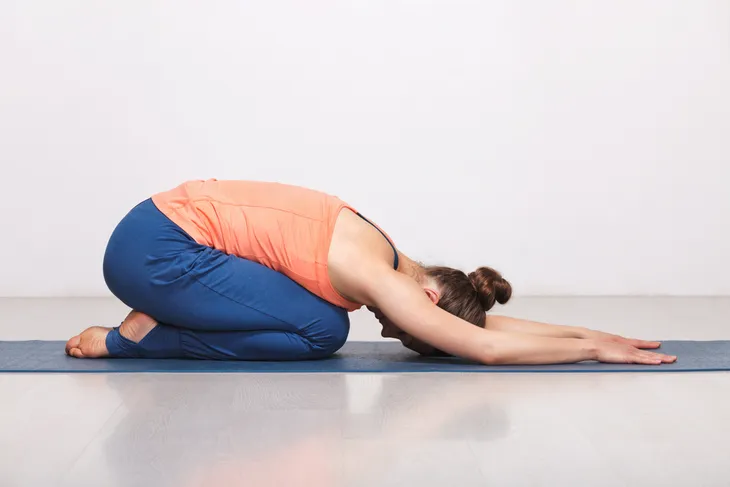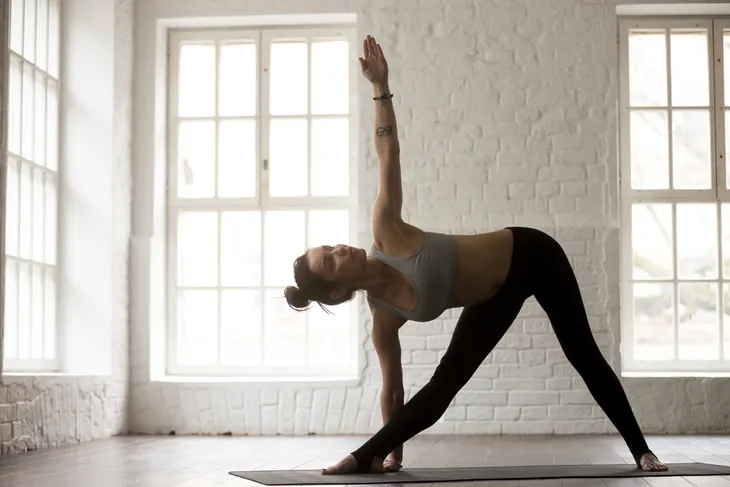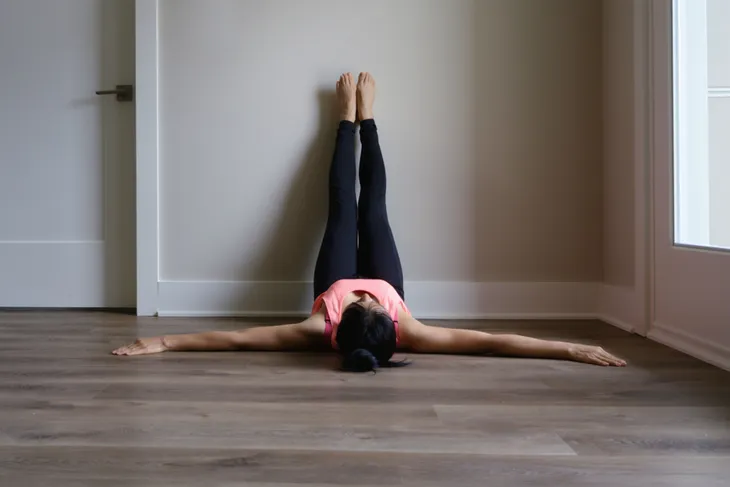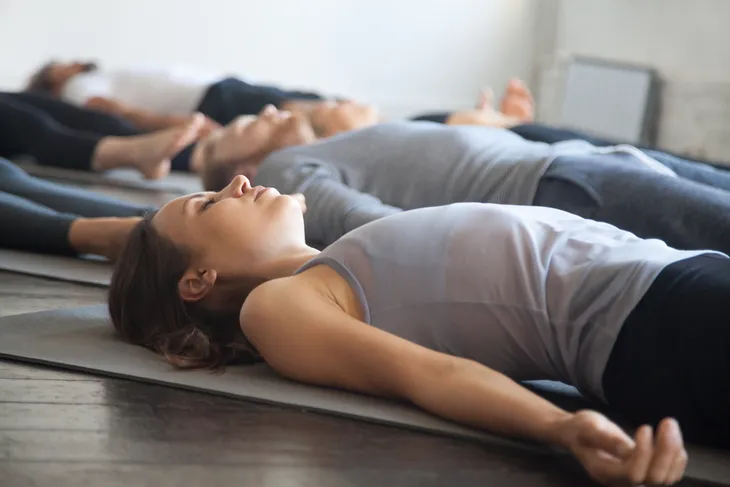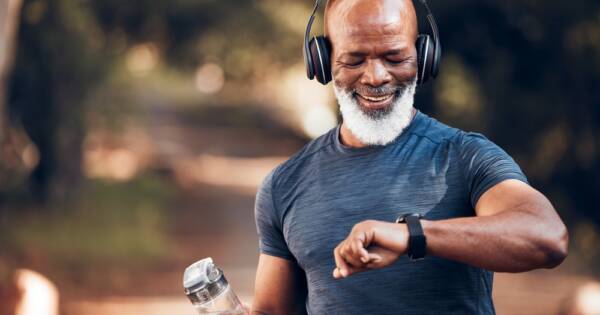I personally love how yoga can invigorate me on one hand, but also help me distress and unwind after a mentally turbulent day. Obviously, yoga can do far more than strengthen and tone the body. Connecting body and mind, this series of yoga asanas (or poses) can shut out the hustle and bustle of the day and prepare your body and mind for a restful night of sleep…
1. Bound Angle Pose
This Bound Angle Pose has you lying on your back with your shoulders and back flat on the floor and your knees bent. The legs (or outer thighs) open in a V to lie flat on the floor. Your legs should resemble a diamond shape, with the soles of the feet pressed together.
This pose offers restorative value as it creates space, opening the chest, back, shoulders, and hips. You can use a bolster or block under the sacrum to create a slight backbend, and a strap to bind or wrap around the back of the pelvis, inner thighs, and feet to encourage greater openness.
2. Wide-Legged Forward Fold
Bending forward at the hips to let your head and neck hang long and loose will do much to provide a relieving stretch to the upper back of the body. Forward folds also calm the nervous system and encourage the release of stress from the back, shoulders, and neck.
Either place your hands lightly on the floor, offering support with the tips of your fingers, or use a block to rest and balance the top of your head. Wide-legged forward folds also ease tension in the hamstrings, back, and soothe neck and headaches.
3. Child’s Pose
The key to easing stress is tapping into the sympathetic nervous system (SNS), which controls and triggers the body’s fight or flight response. Child’s pose can be a grounding pose that finds solace in stillness and safety in rooting through hands and fingers that spread and fix deeply to the floor.
In active child’s pose you can rest your forehead on the floor or prop it upon a yoga block or bolster for support. The idea is for your brain to relax as the front of your body—shins to knees to chest to head to arms to hands—rest and connect to the earth.
4. Triangle Pose
The gentle twist to the spine offered in triangle pose literally works to wring stress and stiffness out of the body. It also creates more space and freedom of movement in the disks and vertebrae located in the back and spine.
Triangle pose should be an easy twist, but you can make this pose even more restorative by using the wall for support. Twists, in addition to creating space, encourage fresh blood flow to the back and hamstrings.
5. Downward-Facing Dog
If you’ve ever done yoga before, you know how great it feels taking downward facing dog between poses. Downward dog is often used as a resting posture between poses to stretch out the back body (shoulders, arms, hips, hamstrings, and calve muscles).
If you work at a desk for the majority of the day, downward facing dog will offer space and ease to the muscles overused, or neglected, when sitting all day. You can make downward dog even more restorative by propping the head up with a pillow or using your forearms and taking dolphin pose (a shorter, more supported variation on downward dog).
6. Legs Up the Wall
This pose offers stillness, support, and calmness to the central nervous system. While at the same time, it uses gravity in your favor to ease pressure on the lower body (particularly the legs and feet) and the heart.
Lie facing up with your back, shoulders, neck, and back of the head flat on the floor. Bend at the waist so your lower back, buttocks, and legs are supported entirely by the wall. Place a block or bolster under your lumbar spine to release any pressure in the lower back. And let gravity reroute blood flow from the lower body towards the heart.
7. Savasana
There is a good reason why every yoga practice ends with savasana (or corpse pose). Savasana is often the most challenging pose for yogis because it requires total relaxation of the body and mind.
You can take savasana as you meditate before bedtime. Shut out the thoughts of the day and focus the mind on systematically releasing each area of the body as it melts into the floor. Corpse pose works to calm the brain, lower blood pressure, and to reduce anxiety, headache, and insomnia.

